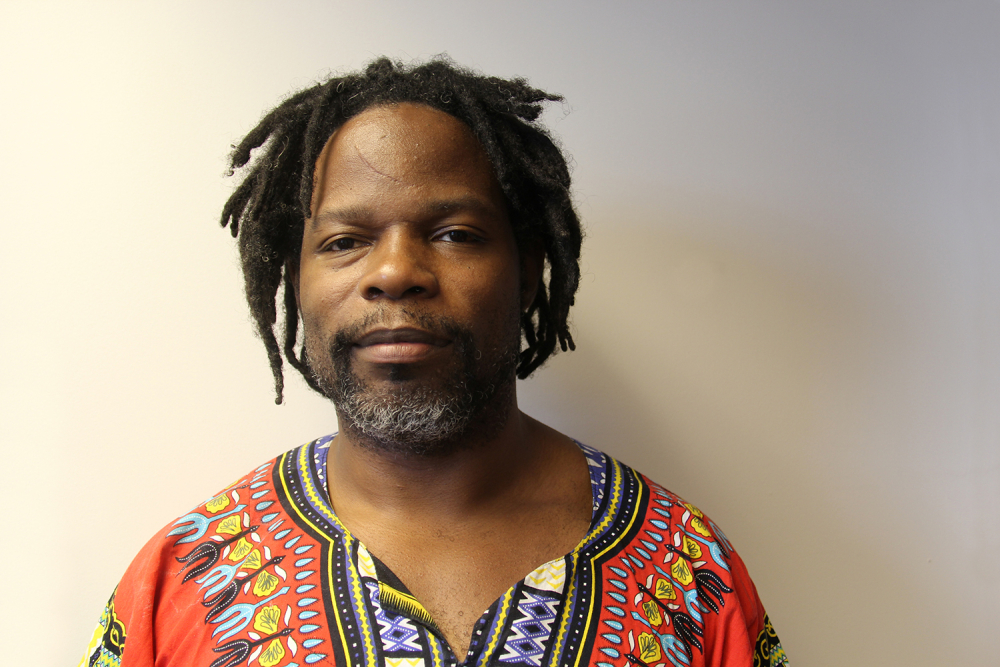This essay explores the djembe’s connection to the civil rights movement continuum through the lenses of djembe history and Jerry’s vocation to educate and uplift his community through West African music.
The historical relationship between musical instruments and African insurrections dates back several centuries. Jerry Jenkins, a traditional djembe player and educator in Jackson, Mississippi, is more than aware of this vast genealogy. When we talk about civil rights,” states Jerry, “we would have to talk about the struggle for civil rights that happened in Africa that came into the United States and all of the other parts where Africans were dispersed in other countries.” In this regard, his djembe playing and storytelling speaks new life into some of the struggles and traditions of the African diaspora. In interviews with the Mississippi Arts Commission, 1 Jerry discussed the legacy of the djembe as an instrument of change and protest, a legacy that informs and inspires his work as a musician today.
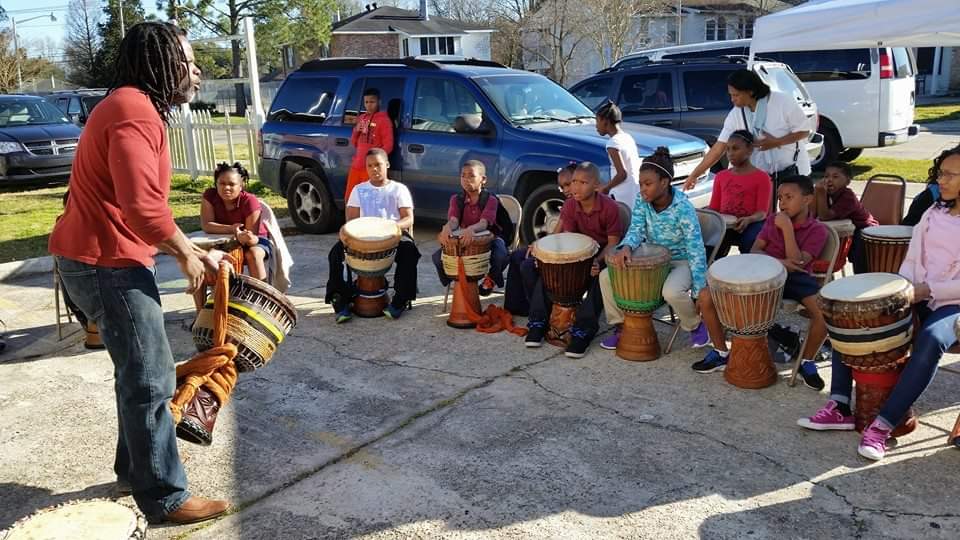
Left: Jerry Jenkins is pictured during a stop on his tour of community centres and schools in Baton Rouge where he taught a series of classes and gave performances about the history of the drum.
Photo courtesy of the artist.
Jerry views the djembe as an essential development in West African music, explaining how, specifically for the Wolof and Malinke people of Mali, Senegal, Gambia, and Côte d'Ivoire, leaders and griots 2 would often tell stories to the rhythm of the drum. “They would remember their stories based upon the rhythm,” he acknowledges. “The best way for them to retain was through music.” Through song, these griots could “tell stories about the people, how they came to exist, their travels, the good, and the bad.” Jerry explains that it was because of this ability to retain and pass on information through music that these storytellers came to be viewed as a threat to colonialism.
Jerry argues that the role griots played in “reminding the Africans of their history and how dignified they were” resulted in their being “strategically attacked and insulted.” He notes how allegations were cast to neutralize their effect in communities, some even accusing the storytellers of “being paid to express lies.” This disparagement, in addition to the colonial officials’ ban on African instruments such as the djembe or the dununs in both “the New World” and West Africa, were “steps to making the people lose their identity.”
Such is the reason why he considers the formation of the national Ballets as a revolutionary stage in West African development. During the late 1950s and early 1960s, as West African nations were regaining their independence from European colonizers, national Ballets were created in countries such as Senegal and Guinea to reintroduce African people to their culture, explains Jerry. “The Ballet is like an opera,” he continues, “which is a story told through music and drama.” The dances and rhythms of the Ballets are based in West African song and dance traditions. A primary goal in developing the Ballet was to prevent losses of cultural identity during colonialism by re-educating the public about their West African culture, music and history. “When the people fought to regain themselves,” says Jerry, “their land and their rights, they turned to the griots, they turned to the storytellers, they turned to the djembe players, and formed the Ballet.” In the same way that the drum was used for resistance before the instrument was banned, the Ballet served a similar function. “The Ballet,” Jerry states, “was used as a form of revolution, and a form of protest for civil rights.”
“I define my profession as being a storyteller...and why I would sum it up as being a storyteller is because they were actually the first teachers. Stories are actually the first form of education.”
In order to expose West African music and culture to the world, dance companies toured the Ballets abroad in Europe and the Americas. Achieving an international reach, songs from the Ballets have become a part of the repertoires of djembe players like Jerry, who play a mix of traditional songs and pieces from the national Ballets. Jerry explained that when he was introduced to the djembe, he first learned songs from the Ballets and then started learning how to play music rooted in the traditions of community djembe music as he became more involved with a group of djembe players in Jackson.
Just as the djembe and the national Ballets were a means to bring West Africans back in touch with their culture and identity, Jerry continues this legacy today through his work as an educator and storyteller. Working in the tradition of the griots, he uses the djembe to educate young people about African culture and history through stories. “I define my profession as being a storyteller,” says Jerry, “and why I would sum it up as being a storyteller is because they were actually the first teachers. Stories are actually the first form of education.” One of the most enjoyable features of his work is his Art Integration programming where Jerry employs “West African culture, through the music, visual arts, and story-telling, to teach students the elements to create their own stories, music and polyrhythms.” As a part of this, he works to not only inform people in Jackson about West African culture but also to convey its genealogical connection to the production of African-American genres such as the Blues, or African-American invented instruments such as the Banjo and the Tambourine.
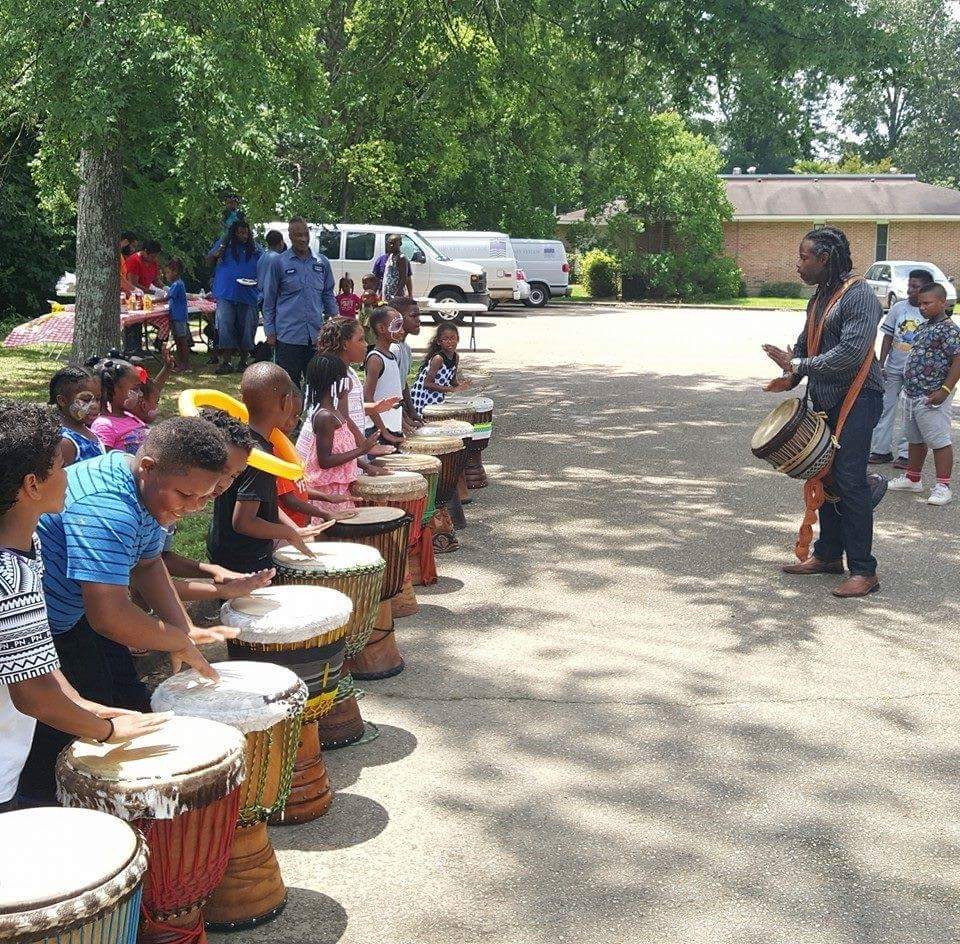
Photo courtesy of the artist.
A foundational element to Jerry’s work as an educator is also rooted in the West African symbol of the Sankofa, which is visually expressed as a bird looking backward. He explains what the Sankofa means for his practice and how it connects to the civil rights movement. “We have to look back to see our past,” says Jerry, “and we have to be conscious of our past and of the people’s struggles and joy in the past to keep that balance in the future. If you don’t know where you're coming from, you don’t know where you’re going. When we talk about civil rights--when you have no idea that you have been mistreated--how do you know that you have been mistreated? You have to tell these stories of the past to make sure this does not continue in the future.” Jerry views his educational calling as an extension of civil rights work because he considers education as one of the pillars of the movement. He explains, “I look at the movement as not always about protesting, marching, and fighting against change. I look at a lot of those organizations as organizations of education, and so I try to impart this knowledge onto my students.”
“Music to me is always a part of civil rights movements. When I am invited to marches, I am there to inspire the people and keep them motivated...They need that uplift and the djembe provides that.”
Outside of the classroom, Jerry remains a highly revered djembe player in Jackson. He is often asked to perform at protests, graduations, community celebrations, festivals, marches, and weddings. He has even played at both the inauguration and commemoration of Mayor Chokwe Lumumba of Jackson, Mississippi in 2013 and 2014, respectively. When he is invited to perform for these events, he plays his djembe to uplift the community. Like education, Jerry views positive uplift through music as an important extension of his civil rights work. “Music to me is always a part of civil rights movements,” says Jerry. ‘When I am invited to marches,” he continues, “I am there to inspire the people and keep them motivated when they are announcing their demands. They need that uplift and the djembe provides that.”
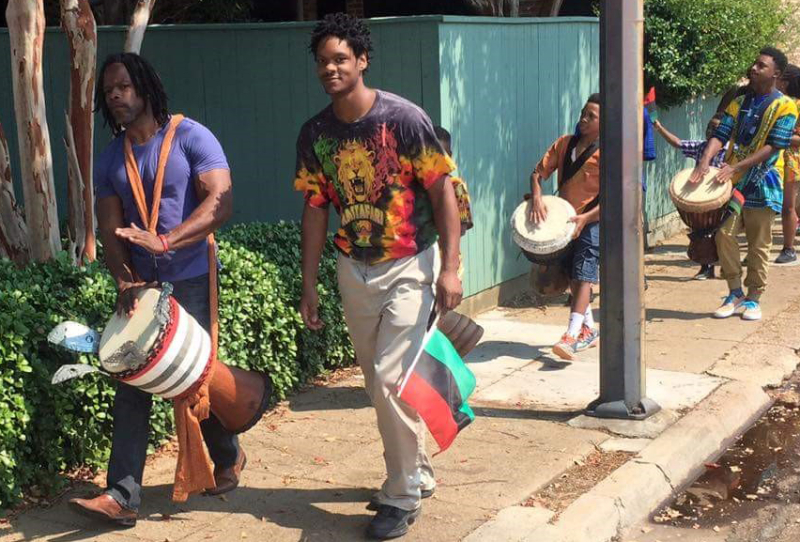
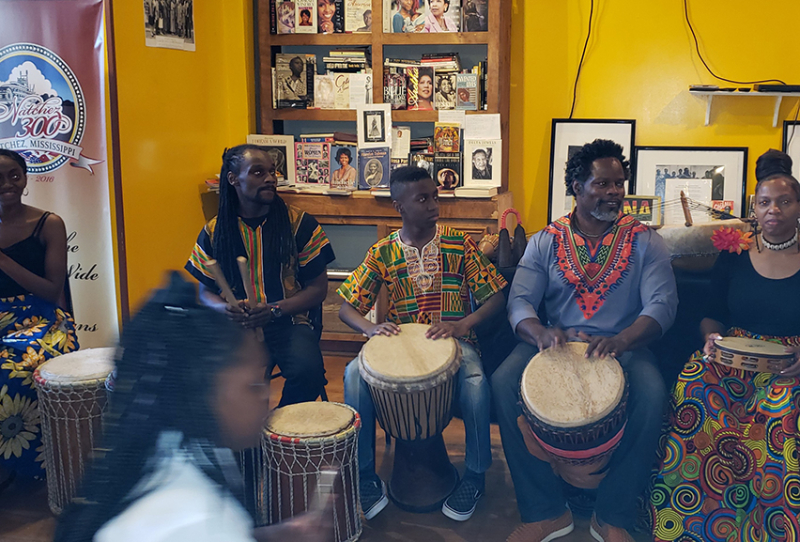
Jerry further demonstrates the role of the djembe in protests through his discussion of his participation in the 2018 “Walk for Good and Right” march in Jackson, Mississippi that commemorated the 50th Anniversary of James Meredith’s “March Against Fear” in 1966. James Meredith was the first African American student to enroll at the University of Mississippi in 1962. Four years later, Meredith commenced the March Against Fear to encourage African Americans to register to vote and to bring awareness to the pervasiveness of white supremacy in the country. Meredith had planned to walk from Memphis, Tennessee to Jackson, Mississippi, but he was shot on the second day of the walk and could not immediately continue. Leaders and members of civil rights organizations, including Dr. Martin Luther King, Jr. and Stokely Carmichael, vowed to march in his place over a period of three weeks. Meredith was ultimately able to rejoin the march’s concluding point in Jackson, where he led a rally at the State Capitol building. 3
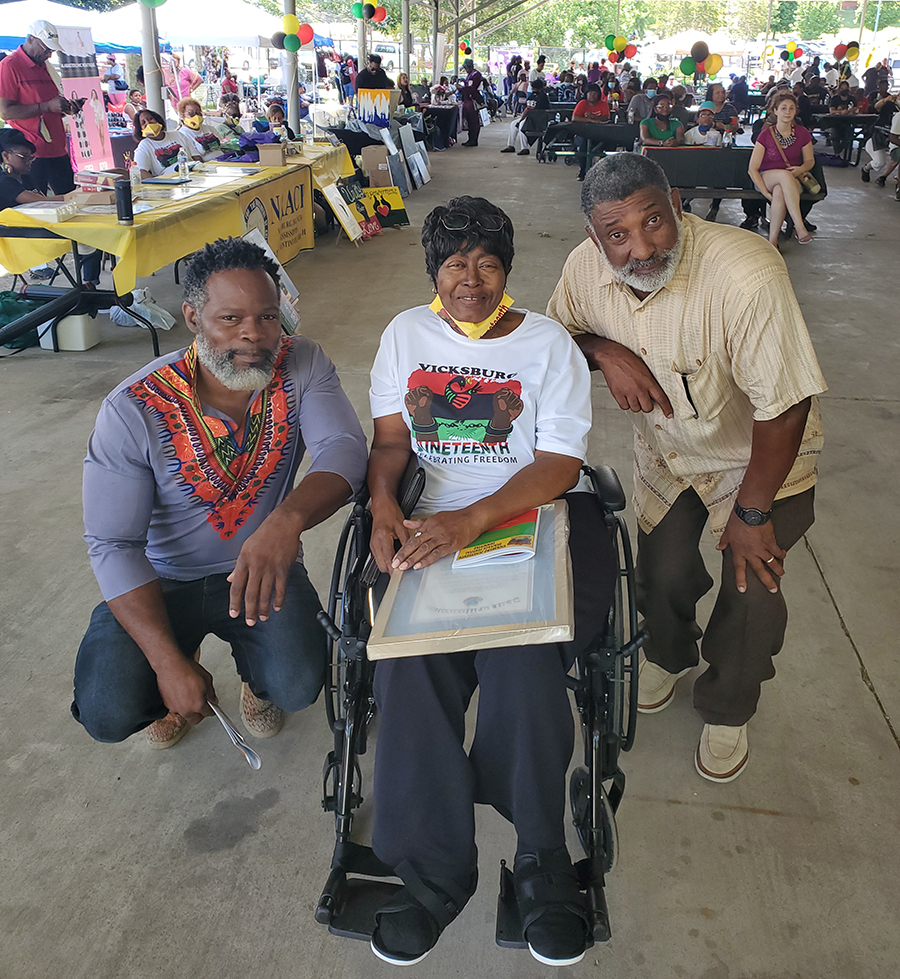
To honor the legacy of James Meredith and his fellow activists, Jerry and his students played the djembe in solidarity with the crowd as they marched during the 2018 commemoration ceremony. “We started marching from the Smith Robertson Museum in Jackson to the Capitol building,” explains Jerry. “It was not a long walk, but it was a hot day. The djembe boosted the morale of the people. They were dancing, singing and clapping while walking.” Jerry adds that in addition to the “Walk for Good and Right”, he participates in marches for organizations such as Black Lives Matter and at marches for prison reform. He says that it is during these moments when the community is fighting for social justice that “the djembe is there.”
Aside from his professional role as a djembe player, at the end of the day, Jerry is a musician who enjoys his craft. “My djembes live in my bedroom,” he laughs. “They live in my living room. Sometimes I can be sitting down watching tv, and I’ll go get my drum and start playing. Sometimes I’ll just sing the song. I don’t know where the inspiration comes from. I may just be feeling a certain way, and I’ll want to play.” Retrieving the bowls from his friends in Guinea, he has learned not only to play the djembe, but also to craft, assemble, and tune it. Over the course of his artistic career, Jerry has become a musician who, along with the djembe, has mastered other West African instruments such as the kora, the bolon, dununs, balofun, and the krin. In addition to mastering and making instruments, he is also passionate about passing on the djembe tradition to younger players in the Jackson area. During the past decade, he has taken on four apprentices through the Mississippi Arts Commission’s Folk Arts Apprenticeship program. Jerry is hopeful for the day that the majority of African music returns to its mission of social advancement. As a performance artist, an educator, and a historian of the culture, he is personally seeing to it that it does.
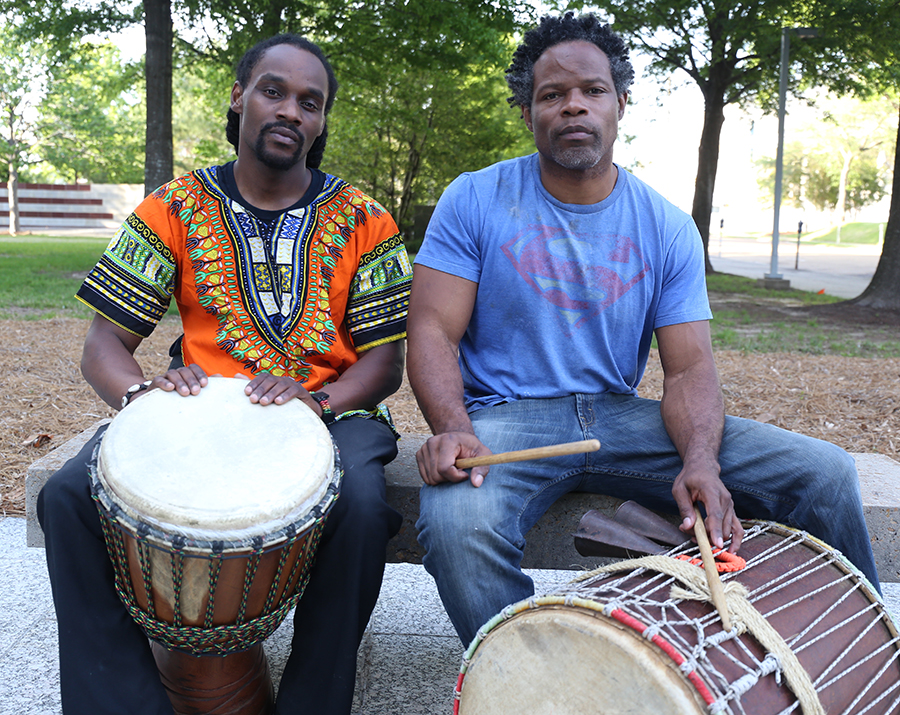
Footnotes
- ^ Information for this essay is sourced from an interview with Jerry Jenkins conducted by Kumasi McFarland and Maria Zeringue on May 23, 2020 and follow-up interviews with Jerry Jenkins conducted by Maria Zeringue on August 19, 2021 and September 28, 2021.
- ^ A griot is a "West African troubadour-historian." https://www.britannica.com/art/griot
- ^ Information about the history of the “March Against Fear” is sourced from: Goudsouzian, Aram. “The March against Fear.” Mississippi Encyclopedia, Center for Study of Southern Culture, 11 Dec. 2019, https://mississippiencyclopedia.org/entries/the-march-against-fear/.

